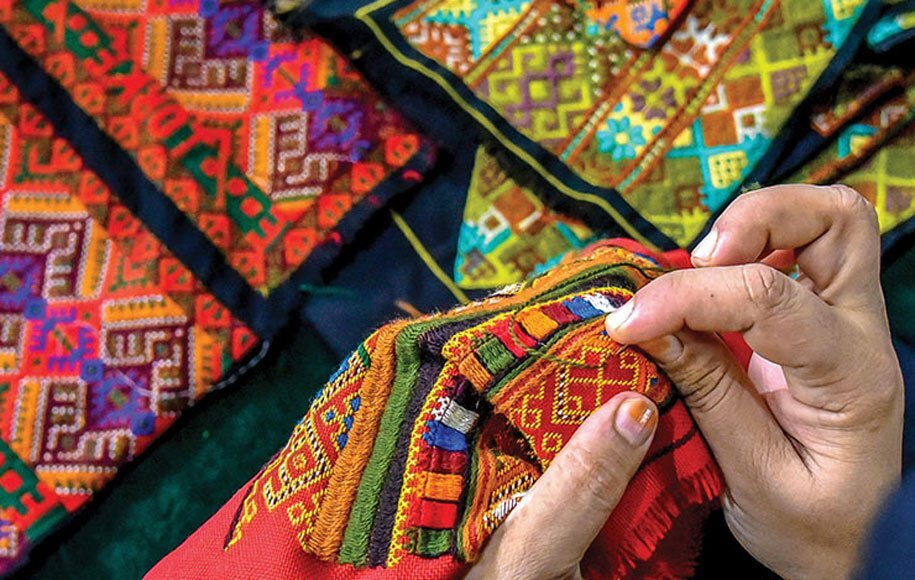Needlework group exhibit opens at tourism ministry

TEHRAN— Collections of traditional needlework have been put on show in a group exhibition at the headquarters of the Ministry of Cultural Heritage, Handicrafts, and Tourism in Tehran.
The exhibition showcases works by craftspeople from the provinces of Khorasan Razavi, Sistan-Baluchestan, and Golestan, CHTN reported on Monday.
Needlework (Souzan-douzi in Persian) is a very common occupation among females in some regions of the country. It is the art of drawing images on plain fabrics by sewing delicate stitches using a needle and colorful yarns.
Last year, the Turkmen style of needlework was jointly inscribed on UNESCO’s Representative List of the Intangible Cultural Heritage of Humanity for Iran and Turkmenistan. In both countries, the Turkmen-style needlework begins with the preparation of thin silk threads that are intertwined in three layers and twisted into a single thread, then straightened with a large needle.
Currently, a total of 13 cities and three villages in Iran have been registered as “world cities” by the UNESCO-affiliated World Crafts Council, which is a non-profit, non-governmental organization founded in 1964 to promote fellowship and foster economic development through income-generating craft-related activities.
Based on available data, the value of Iran’s handicraft exports stood at $400 million during the first ten months of the past Iranian calendar year 1401 (Mar. 21, 2022 – Jan. 20, 2023). Compared with the same period a year earlier, the figure represents some 30 percent growth.
Iraq, Afghanistan, Germany, the United States, and the coastal states of the Persian Gulf are among the countries that traditionally import ceramics, porcelain, hand-woven clothing, personal jewelry, and semi-precious stones from Iran.
AFM
Leave a Comment